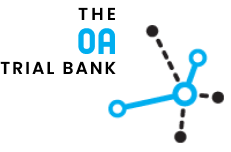Background
Despite the existence of well-developed osteoarthritis (OA) management guidelines for more than a decade, it appears that the majority of people with osteoarthritis still don’t receive appropriate care. In an effort to address this evidence-practice gap, there is growing international interest in the development and implementation of coordinated OA management programs (OAMPs). There are marked differences in the models of service delivery of international OAMPs that have been implemented across a range of healthcare systems and settings. Further, the actual ingredients of these complex interventions appear to vary widely: the interventions offered; treatment mode, delivery, intensity and duration; and healthcare professionals delivering the treatments. The outcomes of different models of international OAMPs are unlikely to ever be compared in clinical trials, particularly due to the huge expense and complicated logistics required. Prognosis research provides another method of comparing participant outcomes of different OAMP models.
The primary objectives of this study are to examine the outcomes (pain and function) of people with hip or knee osteoarthritis who have participated in structured OAMPs and to identify prognostic factors at the individual participant level that are associated with improvements in pain and function.
Methods
This is a project of the Joint Effort Initiative (JEI). The JEI, endorsed by the Osteoarthritis Research Society International (OARSI) is a consortium of >100 researchers, clinicians and consumers with common interests in the implementation of OAMPs. We will identify international OAMP clinical cohort studies through members of the JEI and literature searches. Longitudinal clinical cohorts of OAMPs will be eligible if they are derived from a hip/knee OAMP, delivered in any real-world setting and include the following:
- Personalised OA management implemented as a package of care with reassessment and progression;
- Minimum of two core treatments of education, exercise, and/or weight-loss, +/- optional adjunctive treatments;
- Longitudinal measurements of pain and function.
The investigators of eligible clinical cohort studies will be invited to participate and contribute individual participant data (IPD). Clinical cohort-level outcomes and participant-level characteristics of included studies will be summarised. We will use multivariable linear regression, where final pain and function measurements are the outcomes, adjusting for baseline values as covariates and stratifying by the study. If there is considerable heterogeneity within the cohorts, we will consider using random-effects models to estimate the pooled change. The IPD will be further analysed to examine characteristics that are associated with pain and function at the individual patient level.
Status
Data delivery ongoing
